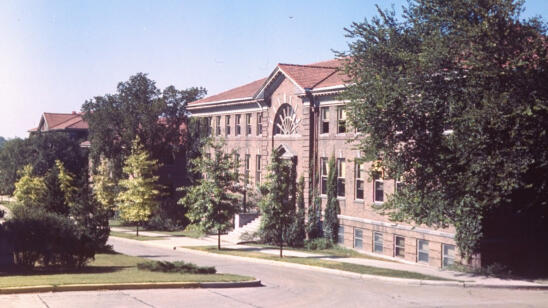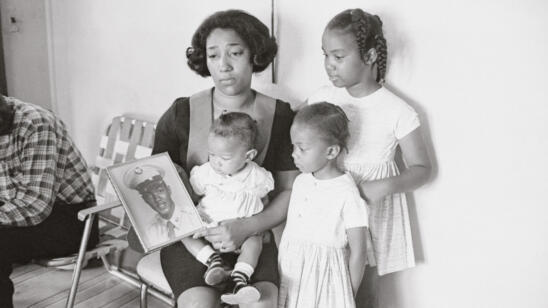True-crime writer Michael Benson’s upstate New York adolescence was touched by two haunting connections to murder. A classmate at the Holy Family School in Rochester was Kenneth Bianchi, who became one of California’s Hillside Strangler serial killers. Before that, in 1966 when he was 9 years old, his babysitter and her friend were taken from a swimming hole behind his house and slain.
The death of the two girls formed the basis for The Devil at Genesee Junction, Benson’s 2015 book about the murders, which remain unsolved. He followed that with investigations into a swath of area crimes that became two separate exposés: Nightmare in Rochester (2018), entirely about the so-called “double initial” or “alphabet” murders that cast a pall over the city in the early 1970s, and Haunting Homicides, (2019) a compilation of two dozen unresolved horrors, most in the same region.
Benson spoke to A&E True Crime about his latest books, explaining how one sprang from the false leads and dead ends he and investigator Donald A. Tubman encountered while researching the other.
Three girls were sexually assaulted and murdered around Rochester between 1971 and 1973: Carmen Colón, Wanda Walkowicz and Michelle Maenza. Their names were alliterative, and their bodies were discarded in towns or villages beginning with the same letter as the victim’s initials. Yet, law enforcement concluded this was ‘coincidence.’ Do you agree?
If they caught one man who murdered all three girls, I’d be thrilled, but surprised. There are key differences in how Carmen was killed and how Wanda and Michelle were killed. I believe Wanda and Michelle were killed by the same person. But Carmen was different. She was strangled from the front. The other two girls were strangled from the back. Profilers will tell us that [assaults occurring] face-to-face, as opposed to those looking at the back of the head, are very different psychologically, and rarely does one killer do both.
We also have evidence that there was more than one person involved in Carmen’s murder. We have witnesses who saw two adults in a car. Whereas with the sightings of Michelle’s killer, he’s always by himself.
On the day Carmen vanished, roughly 100 drivers are believed to have passed her running along the side of what would become Interstate 490. They saw a girl, naked from the waist down, waving her arms. She had escaped from that car. Why didn’t anyone stop to help?
Rochester went through such a collective nightmare after this. Remember: This was in the days before cell phones. You’re zipping along fast on an expressway. By the time you realize what you’ve seen, you’re past it. People thought: “Well, I’ll call the cops when I get home.” Or, “I couldn’t have seen what I just saw.”
This was Rochester’s introduction to pedophilia. Blame was laid extensively. There were letters to the editor saying ‘It’s our shame that nobody stopped and saved that little girl.’ But that’s a knee-jerk reaction to tragedy.
These girls were from poor backgrounds. Did their economic status in any way serve to diminish the investigation?
When you look at it in broad strokes, they were very similar: Carmen and Michelle were both mentally handicapped. They were all Catholic. They were all without dads at home. The mom in each case was on welfare.
It absolutely happens, that some victims don’t get ‘enough’ attention [from the media]. The Genesee Junction murders were like that—my babysitter and her friend. But Carmen, by almost escaping on the highway, forced Rochesterians to look at themselves and to feel so much grief over her that it guaranteed they were going to get 100 percent from law enforcement.
You wrote about a few suspects. One is Joseph Naso, a West Coast killer who for a time stayed in Rochester. Naso, today, is on death row for the murders of six women—three of whom had alliterative names and one who was actually named Carmen Lorraine Colon. How can anyone explain that?
Naso’s story is that he didn’t even know her name. He kept notes about his victims. He talks about how good their legs looked after they were dead. But there’s not a single mention of the alphabet.
Naso’s victims and the Double Initial girls in Rochester were all born around 1960. That’s when alliterative names would have been the most popular. The world had Marilyn Monroe and Brigitte Bardot. We have no indication that anybody’s initials meant anything to any of these killers. They’re just common. How could it be two Carmen Colons [who were victims]? It boggles the mind. You might want to believe that Naso was, in some sense, a copycat, or paying homage to the Rochester killer…but there’s just no evidence of that.
Do you think the Double Initial crimes will ever be solved?
Absolutely. Because there is extant DNA from the Wanda Walkowicz scene. If Wanda and Michelle were killed by the same person, there’s a chance that case can be solved. I’m guessing that Carmen’s case may never be solved.
As The Devil at Genesee Junction and Nightmare in Rochester became more widely read, have some people started to seek you out for help regarding other unsolved cases?
Yes… By the time we finished the Double Initial book, there were 15 to 20 other cases we had investigated. And I said: ‘Let’s put these together.’
One crime you revisit in Haunting Homicides is the death of teenager Tammy Jo Alexander, whose remains were found in 1979 in a New York cornfield. Her identity wasn’t determined until 2015, through DNA. Why did it take so long?
Tammy was a runaway. Sometimes she was away for a while. So when she took off and didn’t come back, foul play didn’t occur to her own mother, and she was never reported missing. It took a high school friend saying: ‘I wonder whatever happened to Tammy Jo,’ more than 30 years later. And that inquiry eventually led to the identification.
When the body was first found, the Eastman Kodak Company retouched a photo [of the coroner’s ‘Jane Doe’ corpse] and it was distributed around the country.
You published that image in the book—this dead girl, eyes wide open, wearing makeup—on the flip side of a page with a picture of the living, ebullient teen.
It’s hard to believe they’re the same person. The result of the Kodak retouching was haunting. In death, Tammy Jo lost her sparkle. Her sparkle was the real deal.
Related Features
Why 2020 Will Be a Groundbreaking Year for Forensic Genealogy and Solving Cold Cases
What Are Some of the Oldest Cold Cases That Have Recently Been Cracked Open?
The Burger Chef Cold Case: Four Murders Still Unsolved Over 40 Years Later
When Will We Get Answers About the Famous ‘Boy in the Box’ Unsolved Murder?
Dick Kitchel: Exploring the Mysterious 1960s Unsolved Murder of an Oregon Teenager


